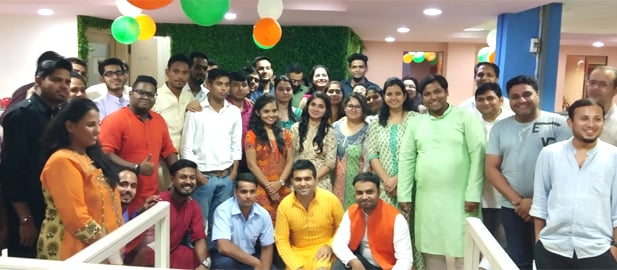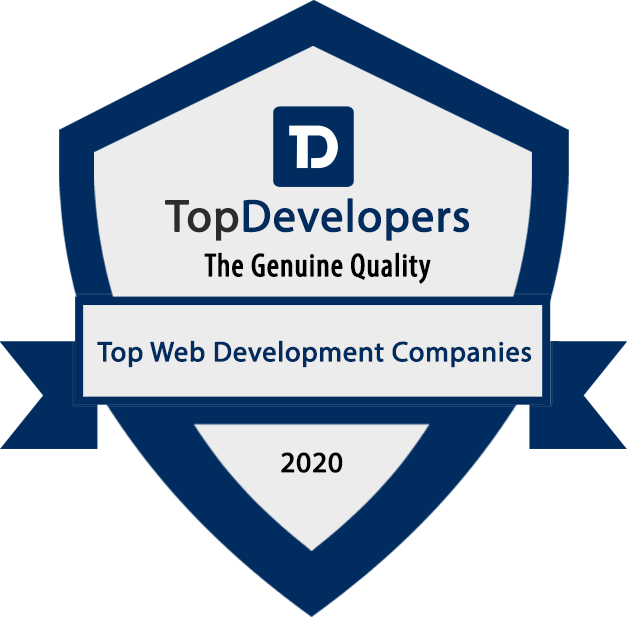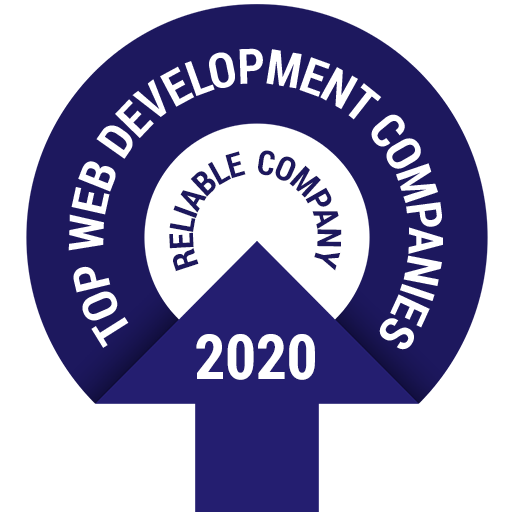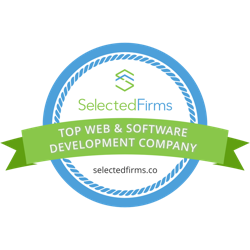The SaaS industry is evolving at breakneck speed, and with it, the dynamics of software development. In today’s hyper-competitive market, outsourcing SaaS product development has become a strategic necessity rather than just a cost-saving measure. With advancements in cloud-native technologies, AI/ML integration, and the need for rapid market adaptation, companies are increasingly leveraging external expertise to meet their ambitious goals. Outsourcing is no longer about handing over tasks—it's about forming meaningful partnerships that drive innovation, ensure scalability, and maximize ROI. In 2025, the way forward is through hybrid models, robust toolchains, and seamless collaboration between globally distributed teams. This comprehensive guide outlines the modern approaches to SaaS outsourcing, best practices, what to look for in a partner, and an actionable checklist to make your outsourcing journey a success.
Rethinking SaaS Outsourcing for 2025: The Need for a Modern Approach
In 2025, outsourcing SaaS product development is no longer a binary choice between onshore and offshore. The approach has matured into hybrid delivery models that combine strategic leadership from onshore teams with the cost-effectiveness and scalability of offshore or nearshore development partners. This ensures that the product vision is tightly controlled while development velocity is maximized.
-
Adoption of Hybrid Delivery Models
Hybrid models offer a blend of cost and quality. Onshore leadership provides proximity to the business and direct alignment with stakeholders, while offshore teams deliver operational efficiency. This setup ensures consistent execution, better accountability, and agility in product delivery.
-
Specialization in Cloud-Native and API-First Microservices
SaaS products today need to be modular, scalable, and capable of integrating seamlessly with third-party systems. A cloud-native, API-first approach using microservices allows teams to build, deploy, and scale components independently. It also simplifies maintenance and enables faster iteration.
-
Integration of AI and ML Capabilities
AI and ML are no longer optional—they are essential for personalization, automation, and competitive differentiation. From predictive analytics to chatbots and intelligent dashboards, integrating these capabilities during the development phase can dramatically enhance user experience and product value.
-
Strengthening Cybersecurity from Day One
Security cannot be an afterthought. With growing threats and increasing regulatory scrutiny, outsourcing partners must incorporate robust security protocols, perform regular audits, and comply with global standards like SOC 2, GDPR, and CCPA. Security-first architecture must be a baseline.
Embracing Agile Workflows and DevOps-Driven Delivery
Speed, flexibility, and quality—these are the pillars of agile SaaS development. The incorporation of Agile practices with DevOps workflows and modern toolchains is a hallmark of effective outsourcing in 2025.
-
Agile Methodologies with Cross-Functional Squads
Agile frameworks like Scrum and Kanban promote iterative development and continuous feedback. Cross-functional teams work in sprints, allowing product owners to review progress frequently and make real-time adjustments based on market feedback or stakeholder input.
-
CI/CD Pipelines for Continuous Delivery
Continuous Integration and Continuous Delivery (CI/CD) enable faster releases with high confidence. Automated testing, version control, and deployment pipelines ensure that every code change passes through quality gates, reducing downtime and improving reliability.
-
Developer Toolchains and Quality Automation
Outsourcing partners should be equipped with a modern stack of developer tools—from integrated development environments (IDEs) to quality assurance (QA) automation platforms. Tools like Jenkins, GitLab, Selenium, and SonarQube are now standard in ensuring code quality, performance, and reliability.
Prioritizing UX, Ecosystem Design, and Rapid Prototyping
In the era of customer-centric products, UX design and ecosystem compatibility determine product success. Today’s users expect seamless experiences and fast onboarding—anything less leads to churn.
-
No-Code/Low-Code Platforms for Prototyping
These platforms accelerate time-to-market by enabling product managers and designers to create interactive mockups quickly. Teams can validate ideas with stakeholders and end users before writing a single line of code, saving development hours and avoiding rework.
-
UX Research and Ecosystem Thinking
Outsourcing partners must go beyond aesthetics to focus on usability, accessibility, and integration. This includes user persona mapping, journey flows, and ecosystem design that considers third-party APIs, data pipelines, and cross-platform functionality.
-
Design Systems and Frontend Frameworks
Utilizing reusable components through design systems ensures visual and functional consistency. Modern frontend frameworks like React, Vue.js, and Tailwind CSS enable scalable and maintainable user interfaces that align with user expectations.
Selecting the Right Outsourcing Partner
The right partner can make or break your SaaS product. It’s essential to look beyond pricing and focus on capabilities, culture, and transparency.
-
Industry-Specific SaaS Expertise
Choose partners who understand your domain. Whether it’s fintech, healthtech, edtech, or e-commerce, domain experience translates to faster onboarding, smarter decision-making, and fewer iterations.
-
Transparent Engagement Models
Clear SLAs, pricing models, and delivery timelines eliminate ambiguity. Whether it’s time & material, fixed-price, or milestone-based billing, the model should align with your risk tolerance and project scope.
-
Support for Scalability and Performance Tuning
A competent outsourcing partner must not only develop but also fine-tune and scale your product. This includes load testing, resource optimization, and cloud cost management using platforms like AWS CloudWatch or Azure Monitor.
Enabling High-Performance Global Collaboration
Remote collaboration is no longer a challenge—it's a competitive advantage when handled correctly. Time zones, languages, and cultures are opportunities, not obstacles.
-
Communication Protocols and Asynchronous Tools
Establish norms for daily updates, sprint reviews, and demos. Use tools like Slack, Microsoft Teams, Notion, and Loom for asynchronous communication and knowledge sharing.
-
Cultural Alignment and Time Zone Coordination
Work with partners who align with your organizational culture and values. Overlap in working hours should be strategically planned to allow collaboration without fatigue or miscommunication.
-
Performance Dashboards and Real-Time Monitoring
Use dashboards to track sprint velocity, bug resolution time, code coverage, and team availability. Metrics should be transparent and visible to all stakeholders for continuous improvement.
Ensuring Security, Compliance, and Long-Term Support
SaaS products deal with sensitive customer data. Ensuring compliance and long-term operational integrity is critical.
-
Data Security and Encryption Protocols
Outsourcing partners should implement secure authentication, end-to-end encryption, and data anonymization techniques. Regular penetration testing and code reviews must be conducted to detect vulnerabilities.
-
Compliance with Global Standards
Ensure adherence to GDPR, SOC 2, CCPA, HIPAA, or other applicable standards. This requires documented policies, regular audits, and a clear data breach response plan.
-
Post-Launch Maintenance and SLA-Driven Support
Maintenance includes fixing bugs, updating libraries, and handling security patches. Service-level agreements (SLAs) should define uptime guarantees, response times, and escalation protocols.
Actionable Checklist for Outsourcing SaaS Development
- Define product vision, business goals, and KPIs clearly
- Choose a hybrid delivery model with onshore oversight
- Select a partner with relevant SaaS and industry experience
- Validate cloud-native and API-first capabilities
- Ensure AI/ML experience and toolchain familiarity
- Check security practices, data handling, and compliance readiness
- Set communication protocols and working hour overlaps
- Use agile project management tools and CI/CD pipelines
- Demand visibility through dashboards and status updates
- Plan for post-launch support and SLA-bound maintenance
Red Flags to Watch For
- Vague timelines, lack of documentation, or ad hoc processes
- No transparency in pricing, contract scope, or team structure
- Poor code quality or lack of automated testing
- Inexperience with cloud-native tools or agile frameworks
- Communication gaps or frequent missed deadlines
- No post-launch support or unclear SLAs
Drive SaaS Excellence with Classic Informatics’ AI-Driven Expertise
Outsourcing SaaS development in 2025 is about achieving speed, innovation, and resilience through smart collaboration. Classic Informatics helps companies navigate this complex journey by offering a hybrid delivery model that combines global scalability with local expertise.
Our dedicated SaaS development teams specialize in:
- Cloud-native architectures and microservices
- AI/ML-powered features like analytics and automation
- Advanced CI/CD pipelines and agile development
- Intuitive UI/UX prototyping with low-code platforms
- End-to-end data security, GDPR and SOC 2 compliance
- Performance optimization and lifecycle maintenance
Whether you're building a new SaaS product or scaling an existing one, we help you achieve faster time-to-market, better user engagement, and long-term scalability.
Ready to Elevate Your SaaS Vision?
Outsourcing your SaaS product development is a strategic move—when done right, it can slash development costs, reduce time-to-market, and unlock a world of innovation. But success hinges on choosing the right model, the right partner, and the right tools.
Are you evaluating your SaaS outsourcing strategy against today’s best practices? Download our SaaS outsourcing guide or get in touch with our consultants to explore how Classic Informatics can help you achieve SaaS success in 2025 and beyond.

Written by Jayant Moolchandani
Jayant Moolchandani is the Head of Customer Success at Classic Informatics.








.png)







